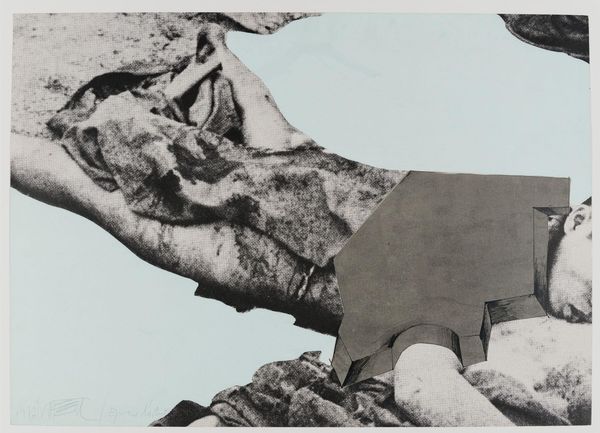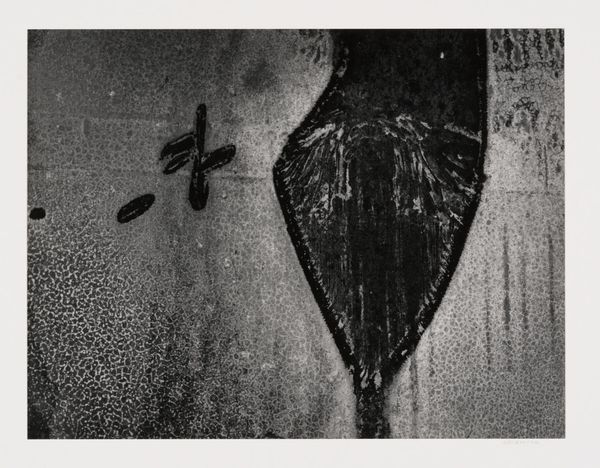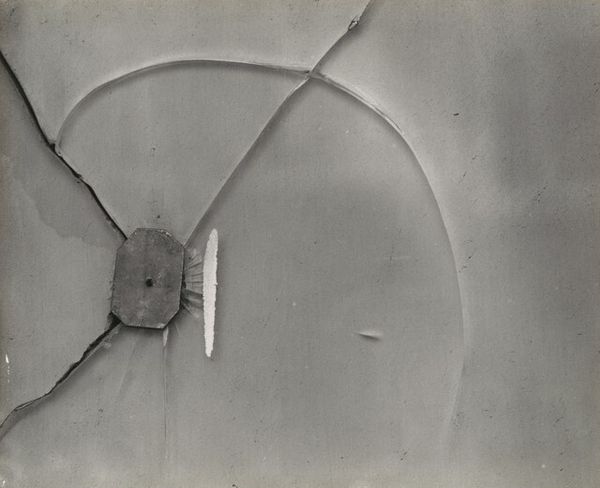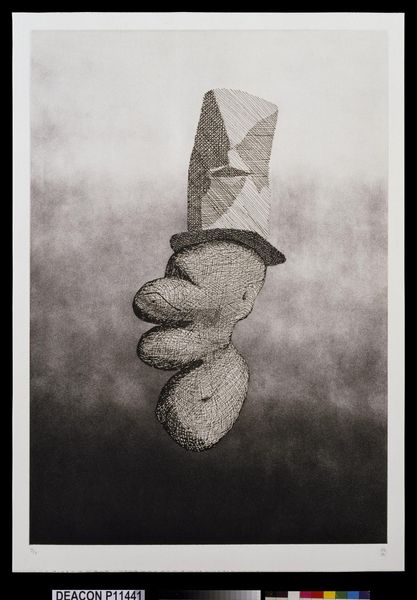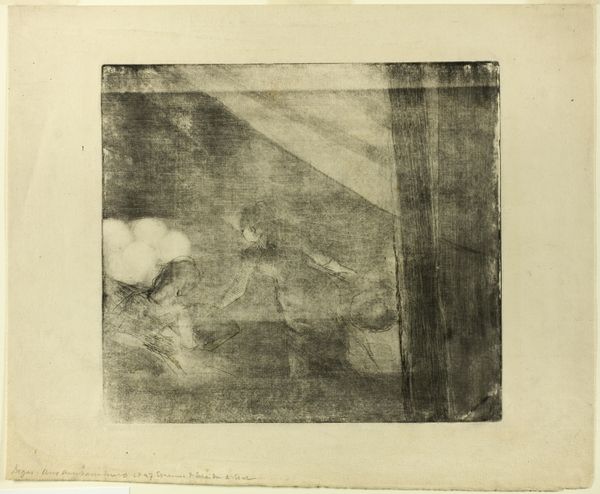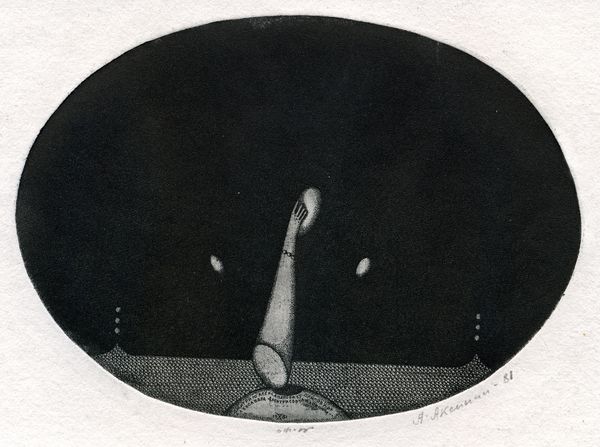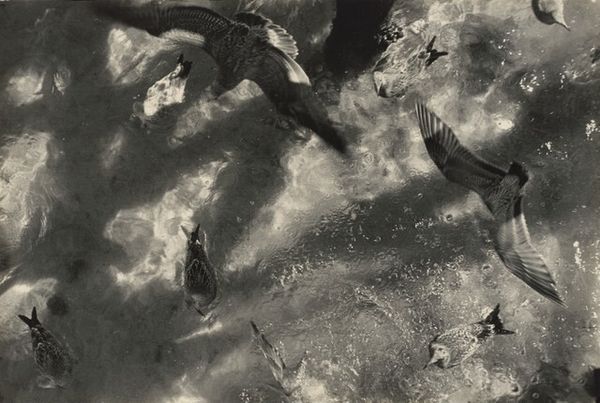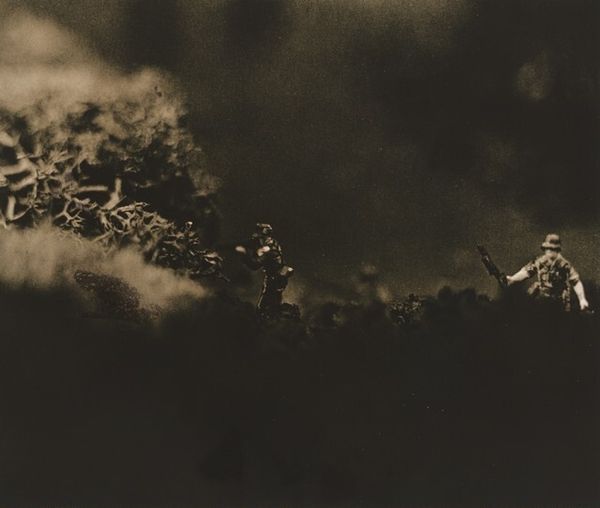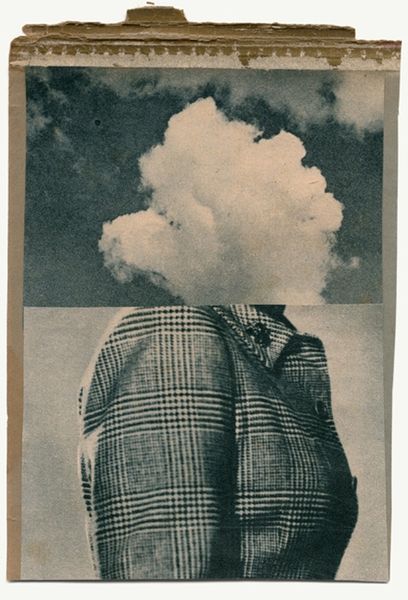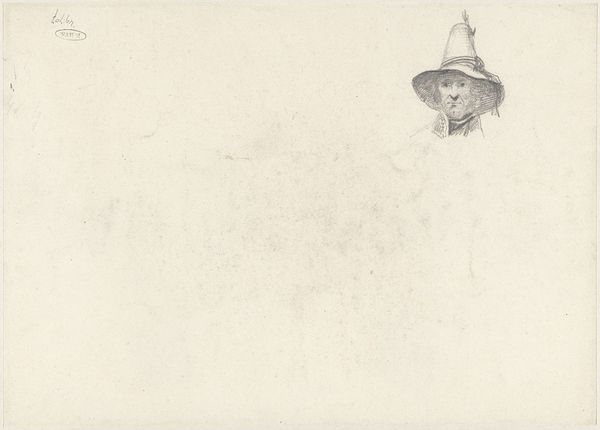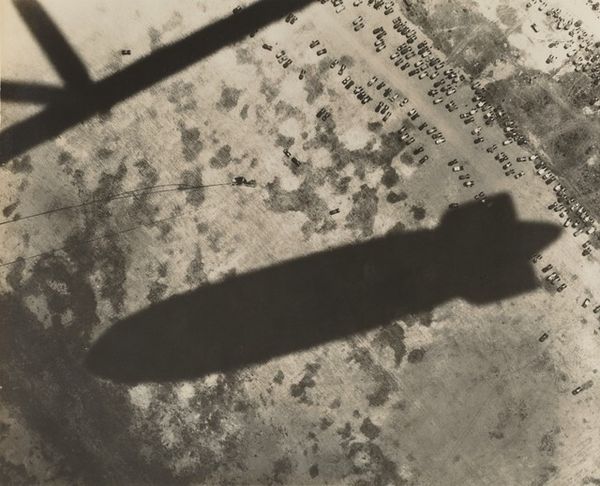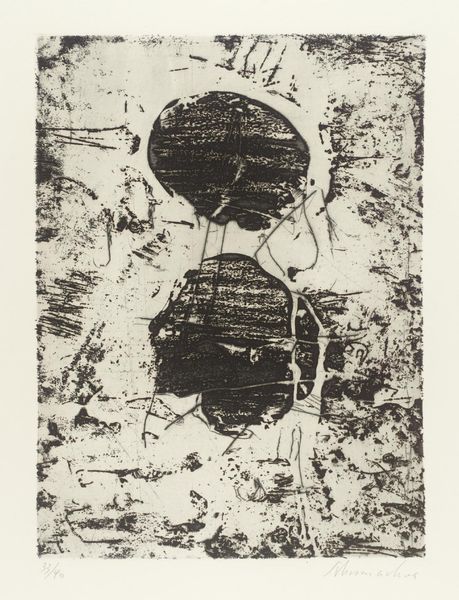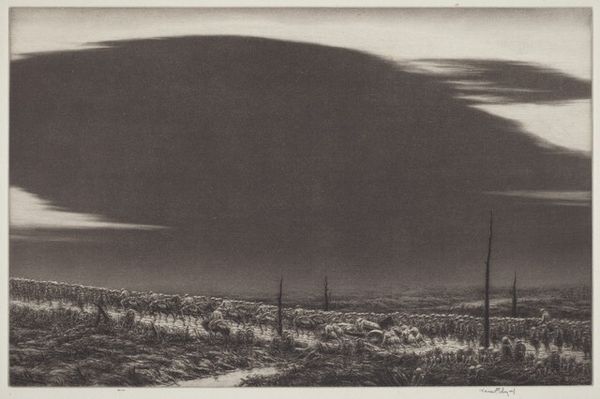
Dimensions: image: 450 x 685 mm support: 540 x 690 mm
Copyright: © Tacita Dean, courtesy Frith Street Gallery, London and Marian Goodman Gallery, New York/Paris | CC-BY-NC-ND 4.0 DEED, Photo: Tate
Curator: Tacita Dean's print, Ballon des Aérostiers de Campagne, presents a large, antiquated airship dominating the sky. It evokes a feeling of faded grandeur, doesn't it? Editor: Absolutely. There's a distinct sense of both technological aspiration and impending obsolescence conveyed here. Airships often symbolize power, but this one feels almost like a relic. Curator: Dean's work frequently engages with themes of time and memory. Considering that airships also evoke militarization, is she asking us to examine the narratives of progress and power inherent in technological advancements? Editor: Perhaps. The image is overlaid with what looks like dried grass, acting as symbols of the natural world reclaiming what was once considered cutting-edge. They introduce a layer of vulnerability. Curator: The very title places it in the countryside, complicating its potential militaristic interpretation. The airship becomes less a symbol of war and more a spectacle or even a tool within a specific social context. Editor: A poignant reminder that even the grandest symbols are ultimately contextual, and, like all things, destined to fade. Curator: Precisely, inviting us to reconsider their cultural and political meanings through time.
Comments
tate 6 months ago
⋮
http://www.tate.org.uk/art/artworks/dean-ballon-des-aerostiers-de-campagne-p20250
Join the conversation
Join millions of artists and users on Artera today and experience the ultimate creative platform.
tate 6 months ago
⋮
Ballon des Aérostiers de Campagne belongs to a portfolio of twenty black and white photogravures with etching collectively entitled The Russian Ending. The portfolio was printed by Niels Borch Jensen, Copenhagen and published by Peter Blum Editions, New York in an edition of thirty-five; Tate’s copy is the fifth of ten artist’s proofs. Each image in the portfolio is derived from a postcard collected by the artist in her visits to European flea markets. Most of the images depict accidents and disasters, both man-made and natural. Superimposed on each image are white handwritten notes in the style of film directions with instructions for lighting, sound and camera movements, suggesting that the each picture is the working note for a film. The title of the series is taken from a convention in the early years of the Danish film industry when each film was produced in two versions, one with a happy ending for the American market, the other with a tragic ending for Russian audiences. Dean’s interventions encourage viewers to formulate narratives leading up to the tragic denouements in the prints, engaging and implicating the audience in the creative process.
